Shamian Island Guangzhou isn’t like the rest of the city. It’s where colonial mansions, tree-lined lanes, and peaceful riverside paths replace busy streets. Locals sip tea under banyan trees while wedding couples snap photos under Gothic spires. The island’s mix of history, architecture, and calm vibes makes it a perfect break from Guangzhou’s usual rush. You’ll find old consulates, cozy cafés, small museums, and gardens packed into just a few quiet blocks. Whether you're hunting photo spots or just craving a slower pace, Shamian Island Guangzhou delivers.
Why Is Shamian Island One of Guangzhou’s Most Unique Spots?
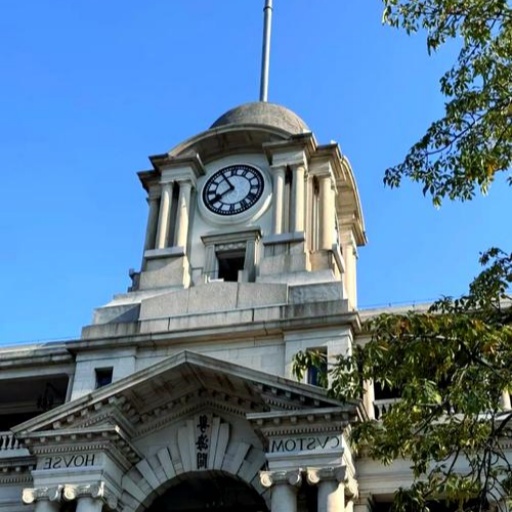
Shamian Island
What is Shamian Island?
Shamian Island Guangzhou is a tiny slice of calm inside the city buzz. You’ll find it sitting right on the Pearl River’s edge, covering just 0.3 square kilometers. But don’t let its size fool you. This little spot carries way more charm than many larger districts in Guangzhou. It almost feels like the city takes a deep breath and slows down here. That’s exactly why locals and travelers keep coming back.
The entire shamian island guangzhou area is shaped like a perfect rectangle, bordered by two quiet canals. Wide, tree-lined avenues cut across it, creating peaceful walking paths. Unlike most of modern Guangzhou, you won’t hear endless car horns here. Instead, you’ll hear birds, kids playing, and maybe a street musician near the riverside. Palm trees sway gently while old banyan trees spread huge roots along sidewalks.
It’s not just the atmosphere that makes shamian island guangzhou special. The entire island feels like a living museum of the city’s colonial chapter. Foreign embassies, old consulates, and restored mansions still stand proudly, many of them now used as cafes, museums, or boutique hotels. Walking here feels like stepping into a different time zone while still inside today’s Guangzhou.
A Brief History of Shamian Island
Shamian Island didn’t start out as a colonial showpiece. Originally, it was just a sandbank along the Pearl River, where fishermen and merchants stopped to load and unload cargo. Its Cantonese name, "Shamian," means "sandy surface"—a fitting description for what it once was. But its transformation into the place we see today began in the mid-19th century.
After the Second Opium War, Western powers forced China to open more trading ports. Guangzhou was already a busy trade center, so foreign nations wanted a secure area for business and residence. That’s when Shamian Island was leased out as a concession. The British controlled the western part, and the French took the east. They didn’t just set up offices—they built homes, churches, clubs, and consulates, each reflecting European architectural styles.
Over the decades, shamian island guangzhou turned into a mini-European enclave. Streets lined with Gothic churches, Neoclassical embassies, and Baroque-inspired mansions stood out in sharp contrast to the traditional Cantonese architecture across the river. Foreign bankers, diplomats, and missionaries lived here under special legal systems, separated from the Chinese residents by bridges and checkpoints. Even today, you can still see iron gates, stone posts, and the remnants of old customs houses that once regulated entry to the island.
When foreign concessions ended in the 20th century, many of these buildings were repurposed by local government and businesses. Luckily, much of the architecture was preserved instead of demolished, giving shamian island guangzhou its unique atmosphere today. Now, visitors walk these quiet tree-lined streets, surrounded by history that blends Guangzhou’s global past with its modern rhythm.
What to See When Walking Through Shamian Island?
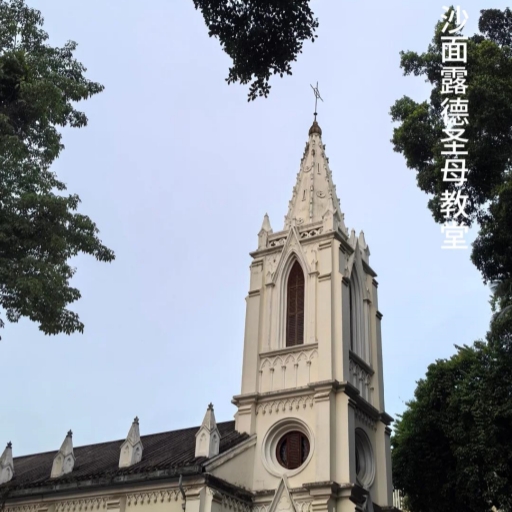
Our Lady of Lourdes Chapel
The White Swan Hotel: Riverside Luxury with History
The White Swan Hotel sits right next to Shamian Island Guangzhou, facing the Pearl River. It’s not just another luxury hotel; this spot carries historic weight. Opened in 1983, it was one of the first five-star hotels in China allowed to host foreign visitors. Diplomats, celebrities, and even U.S. presidents have stayed here. Its prime location gives guests easy access to Shamian Island’s main attractions while offering gorgeous river views.
The hotel blends modern comfort with subtle Cantonese design. Rooms typically start around ¥900–¥1500 per night, depending on season and room type. Foreign travelers will find it very welcoming, with full English service, Western dining options, and even airport transfer assistance. The lobby’s marble staircase and giant crystal chandeliers add a touch of old-world glamour. Many visitors use the hotel as their base while exploring Shamian Island Guangzhou.
Even if you’re not staying here, it’s worth stepping inside for a coffee or snack. The hotel’s riverside walkway offers perfect views of passing cargo ships and ferries. The location also makes it an excellent photography spot during sunrise or sunset, when the Pearl River turns gold.
The Former British Consulate: A Window Into Colonial Power
One of the most iconic buildings on Shamian Island Guangzhou is the Former British Consulate. Built in 1859, this two-story neoclassical building once housed British diplomatic operations during the height of foreign influence in Guangzhou. Its grand pillars, tall windows, and symmetrical facade stand as a reminder of the power dynamics of that era.
Today, the building has been carefully restored. While it no longer functions as a consulate, visitors can admire its exterior and sometimes attend public cultural exhibitions inside. The building’s clean white walls make it a favorite photo backdrop for tourists. Standing here, it’s easy to imagine British officials walking these grounds as steamships docked along the nearby river.
Surrounding the consulate are several smaller former embassy buildings. Though many have been repurposed for government offices or schools, their architecture remains intact. These quiet corners offer peaceful spots to sit, take photos, or simply absorb the mix of European design and Guangzhou’s tropical vibe.
Shamian Island’s Gardens and Parks: Green Spaces Full of Charm
What makes Shamian Island Guangzhou truly relaxing are its gardens and small parks scattered throughout. The island is lined with banyan trees, palm trees, and lush flowerbeds that offer plenty of shade for slow walkers. Benches sit under canopies of green, perfect for watching locals practice Tai Chi or kids playing nearby.
At the center of the island, you’ll find spacious plazas with bronze statues showing scenes from old Guangzhou life—traders, musicians, and fishermen. These public art pieces give visitors little visual stories to enjoy along their strolls. Early mornings are especially peaceful here. Locals walk their dogs, elderly couples enjoy quiet chats, and the whole atmosphere feels miles away from the city buzz.
During spring, blooming flowers fill Shamian Island Guangzhou with color. Many couples choose this season for wedding photography sessions under the trees. Even during busy weekends, the parks maintain their laid-back rhythm. Visitors who want a break from Guangzhou’s crowded malls and streets will find these gardens feel like an entirely different city.
Churches: The Spiritual Heart of Shamian Island
Religious buildings add another layer of depth to Shamian Island Guangzhou. The most famous is Our Lady of Lourdes Chapel, built by French missionaries in 1892. Its Gothic spire rises above the treetops, with arched doors and stained-glass windows that feel like they belong in Europe. The church still holds regular Sunday services and opens to tourists during off-hours. Entrance is free, though donations are welcome.
Across the island, you’ll also spot smaller chapels and mission houses once run by Protestant groups. Though some have been converted into community centers, their facades remain intact. Their presence reminds visitors how active Western missionaries once were in Guangzhou’s early foreign trade years.
Walking among these churches, visitors sense Shamian Island Guangzhou’s complex cultural layers. It’s not just about religion but also about how faith, trade, and politics all collided here for over a century.
The Historical Museums: Small but Worth a Visit
While Shamian Island Guangzhou isn’t packed with large museums, a few smaller ones add extra context to your visit. One notable stop is the Shamian Exhibition Hall, which shares stories of the island’s colonial past through old photos, trade records, and maps. Entrance fees are usually low or free, making them easy side stops while you walk.
Another small museum space focuses on Guangzhou’s role as a major port city. Exhibits include maritime artifacts, old ship models, and trade documents. These displays help visitors better understand why Shamian Island Guangzhou became so strategically important for foreign merchants.
Though these museums won’t take long to visit, they give helpful background before or after you wander the island. Combined with the architecture and atmosphere, they complete Shamian’s story as a living record of Guangzhou’s role in global trade history.
What to Do Around Shamian Island Beyond the Island Itself?
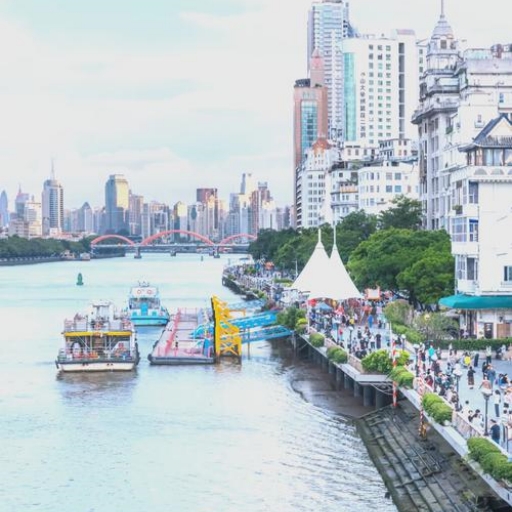
boarding docks
Qingping Market and Authentic Guangzhou Food
Just a short walk from Shamian Island Guangzhou sits Qingping Market, one of the city’s oldest and most authentic markets. Unlike the modern shopping malls downtown, this place still carries strong local vibes. Originally famous for its herbal medicine stalls, Qingping Market has now expanded to include dried seafood, preserved goods, and rare traditional Chinese ingredients.
As you stroll through its narrow lanes, you’ll see locals bargaining for everything from dried scallops to rare medicinal roots. Don’t be surprised if the shop owners offer you samples of dried mango, candied plums, or herbal teas. The atmosphere here is loud, colorful, and very Guangzhou. While most of the signage is in Chinese, many vendors are friendly and will still try to communicate with international visitors using basic English or even a calculator.
After wandering the market, you can head to nearby food stalls that serve authentic Cantonese snacks. Try steamed rice rolls, roast goose, or the famous shrimp dumplings (har gow). Most dishes cost between ¥10–¥50, making it a great place to taste real Guangzhou flavors without breaking your budget. This small detour from Shamian Island adds another layer to your Guangzhou trip—a glimpse of daily life that locals still enjoy every day.
Pearl River Night Cruise & Nearby Attractions
Once the sun starts setting, one of the best ways to enjoy Shamian Island Guangzhou and its surroundings is by hopping on a Pearl River night cruise. The boarding docks are located just a few minutes’ drive from Shamian Island. You’ll see Guangzhou’s skyline light up as you float past landmarks like Canton Tower and Haixinsha Island. The reflection of neon lights on the calm water creates a peaceful vibe that feels completely different from the city streets.
Most cruises last about 70–90 minutes and cost around ¥80–¥150 depending on the boat class and seating type. Some offer open-air decks where you can take better photos, while others serve snacks and tea. Booking in advance through apps like Ctrip makes things easier, especially during weekends or holidays when cruises fill up fast.
After your cruise, you’re still close to other attractions like Shangxiajiu Pedestrian Street. It’s a busy shopping area filled with old Cantonese architecture, snack vendors, and souvenir shops. You can easily walk here from Shamian Island in about 15 minutes. This makes it perfect for ending your evening with some late-night shopping or street food before heading back to your hotel.
When Is the Best Time to Visit Shamian Island?
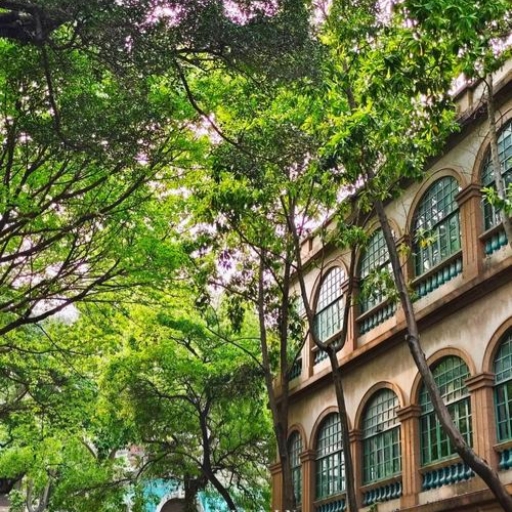
Shamian Island's View
Seasons to Avoid or Aim For
Timing your visit to Shamian Island Guangzhou can make a big difference in your experience. The city’s subtropical climate means hot, humid summers and mild winters. Spring (March to May) and autumn (October to early December) are generally the best times to go. During these months, the weather is pleasant, the skies are clearer, and temperatures stay between 18°C to 26°C. Walking under the banyan trees during these seasons feels refreshing rather than sticky.
Summer, especially from June to August, can be brutal. The heat climbs above 35°C, and the humidity makes walking uncomfortable. Afternoon rain showers are also common. If you visit during this period, go early in the morning or late in the evening to avoid the worst heat. Winters are cooler but rarely cold. Daytime temperatures usually stay above 10°C, making it a fine option for travelers who prefer fewer crowds.
Public holidays can also impact your visit. Golden Week (early October) and Chinese New Year see massive domestic travel. Shamian Island Guangzhou gets busier during these times, though it never feels as packed as other tourist hotspots. If you want peaceful streets and photo-friendly lighting, aim for weekdays in spring or autumn.
What Time of Day Has the Best Light for Photos?
Photography is one of the highlights of visiting Shamian Island Guangzhou. The combination of colonial buildings, riverside views, and tree-lined paths creates perfect photo opportunities. Early morning offers soft lighting and fewer people. Around 7:00 to 9:00 AM, the rising sun filters through the trees, casting gentle shadows on the pastel-colored buildings.
Late afternoon, especially around 4:00 to 6:00 PM, provides warm golden light. This is when the island looks its most romantic. The river reflects the sunlight, and the streets take on a calm glow. These hours are perfect for portrait shots, whether you’re capturing the European facades or the garden corners. Many wedding photographers schedule shoots during this window for the best natural effect.
Evenings have their own charm too. Streetlights turn on, and Shamian Island Guangzhou becomes softly lit, giving it a nostalgic vibe. While night photos require steadier hands or a tripod, the empty streets offer clean backgrounds without tourist crowds. Whether you prefer morning calm or evening mood, both windows give you a very different—but equally beautiful—Shamian Island.
How to Get to Shamian Island Guangzhou?
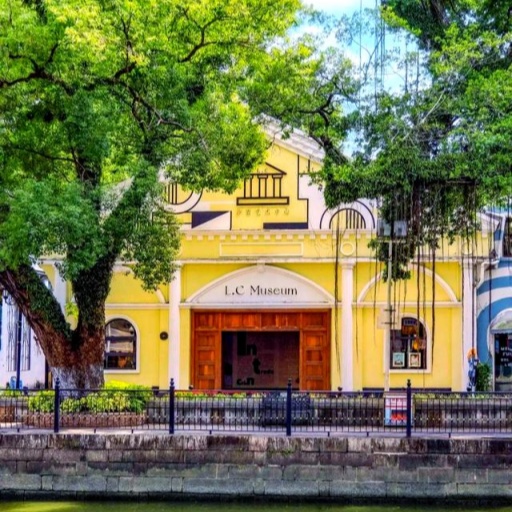
L.C Museum
Taking the Metro: Fast and Easy
For most travelers, the Guangzhou Metro offers the simplest way to reach Shamian Island Guangzhou. The system is modern, affordable, and foreigner-friendly. You’ll want to head for Huangsha Station on Metro Line 1. This station sits just across the canal from Shamian Island. Once you exit from Exit B, it’s a short 5-minute walk over the bridge, and you’ll find yourself right at the island’s entrance.
Signs inside the metro stations are in both Chinese and English. Ticket machines accept cash, Alipay, and WeChat Pay, but foreign credit cards aren’t always accepted. A one-way ride to Huangsha Station usually costs between ¥2–¥6, depending on your starting point. Trains run frequently, about every 5 minutes during the day, and service generally operates from 6:00 AM to 11:00 PM.
If you’re staying near major hotels like The Garden Hotel, Shangri-La, or hotels along Beijing Road, taking Line 1 or connecting lines makes the trip smooth. For visitors unfamiliar with Guangzhou, metro maps and navigation apps like Metro Guangzhou or Baidu Maps (with offline download) are helpful tools to plan routes in advance.
Using Taxis or Ride-Hailing Apps
For door-to-door convenience, taxis and ride-hailing apps work well for reaching Shamian Island Guangzhou. Licensed taxis are easy to find in most tourist areas and hotels. The ride from downtown locations like Tianhe or Beijing Road to Shamian Island usually takes 20–30 minutes, depending on traffic. Fares typically range from ¥20 to ¥50.
Most drivers speak limited English, so it’s helpful to have your destination written in Chinese: “沙面岛 (Shamian Island).” Ride-hailing apps like Didi are even more foreigner-friendly. The Didi app offers an English version, allows credit card payment, and shows your driver’s details and route clearly. This removes the need for complicated directions or language barriers.
During peak hours (morning rush or evening commute), expect slower traffic along bridges and major downtown roads. If your hotel concierge is available, they can help pre-book taxis or assist you with using Didi. For travelers with luggage or families, ride-hailing often offers better comfort than crowded metro trains.
Walking Routes from Nearby Districts
If you're already staying close to Shamian Island Guangzhou, walking becomes the easiest option. For example, visitors lodging in the Liwan District or near Shangxiajiu Pedestrian Street can easily reach Shamian Island on foot within 15–20 minutes. The walk takes you through charming old neighborhoods, past street markets, and under shaded tree canopies.
One common route starts from Shangxiajiu Road, heading west towards the Pearl River. Cross over the Renmin Bridge, and Shamian Island will appear straight ahead. The scenery along the way offers small glimpses of local life—street food stalls, elderly residents playing chess, and kids practicing traditional dance routines.
Walking allows you to soak in Guangzhou’s everyday rhythm while approaching the more serene atmosphere of Shamian Island. Just wear comfortable shoes, especially in the warmer months, as some sidewalks may be uneven. The stroll itself adds another layer of charm before you even step foot onto the island.
Frequently Asked Questions (FAQs)
Q: Why Shamian Island Deserves a Spot on Your Guangzhou Itinerary?
A: Shamian Island blends history, architecture, and a slower rhythm rarely found elsewhere. In Guangzhou’s busy energy, this tiny island offers real breathing room. You walk under banyan trees while admiring restored colonial mansions. The riverside setting adds calm to your visit. Unlike tourist-packed zones, Shamian stays peaceful even on weekends. The blend of British and French architecture tells a piece of Guangzhou's foreign trade story. You’ll find cafes, churches, gardens, and photo spots in one small area. It’s also close to markets and Pearl River cruises. Many locals visit for wedding photos because of its beauty. Foreigners appreciate the walkability and clear bilingual signs. Shamian Island gives you a different slice of Guangzhou. It’s not about skyscrapers or malls. It’s about heritage, calm walks, and charming corners. You won’t need an intense itinerary here. Just stroll, sit, and watch daily life unfold. That quiet contrast makes Shamian Island worth adding to any Guangzhou plan.
Q: What’s the dress code for visiting churches on Shamian Island?
A: There’s no strict dress code, but modesty shows respect in active churches. For Our Lady of Lourdes Chapel, avoid shorts, tank tops, or revealing outfits. Locals often wear casual but neat clothing when attending services. If you visit outside service hours, rules relax, but respectful attire stays appreciated. Think covered shoulders and longer shorts or skirts. Hats and sunglasses should be removed inside. Cameras are usually allowed, but silence is expected during services. If you're unsure, follow the example of locals around you. Volunteers sometimes greet visitors and guide them politely. Sandals are fine, but avoid beachwear or loud prints inside. These churches aren’t tourist attractions only—they’re still functioning places of worship. Dressing appropriately helps maintain the peaceful atmosphere. It also ensures you’re welcomed warmly by the small church community present there. Simple rule: when in doubt, dress modest and respectful.
Q: Are there any guided walking tours available on Shamian Island Guangzhou?
A: Yes, several companies offer guided walking tours focused on Shamian Island. Local tour guides explain the island’s unique colonial history in rich detail. These tours usually last one to two hours, depending on your pace. Guides share stories behind buildings, old consulates, and cultural clashes during the concession period. Many also point out architectural features you might miss walking alone. Some tours include photo stops, hidden alleyways, and visits inside certain buildings. English-speaking guides are available, though it’s wise to book ahead. You can arrange tours through agencies or online platforms like Klook or Viator. Prices often range from ¥100 to ¥300 per person. Private customized tours cost more but allow flexibility. If you prefer DIY, some apps offer self-guided audio tours with maps. A guide brings history alive and adds context beyond basic sightseeing. For first-time visitors, joining one helps deepen your understanding of Shamian Island Guangzhou.
Q: Are there any souvenir shops on Shamian Island where I can buy local crafts?
A: Yes, you’ll find small souvenir shops scattered across Shamian Island Guangzhou. They don’t overwhelm like big tourist markets but offer nice choices. Shops near the pedestrian zones sell postcards, magnets, and local tea gift boxes. Some stores carry hand-painted silk fans, embroidered pouches, and simple calligraphy prints. You may also spot items tied to Guangzhou’s “time-honored brands” like White Rabbit candy. Most prices are reasonable, typically under ¥50 for small souvenirs. For higher-end pieces, a few boutique stores offer jade jewelry or pearl accessories. Bargaining isn’t common here since prices are mostly fixed. Staff often speak basic English or use translation apps if needed. Payment by cash or mobile apps like WeChat Pay is widely accepted. If you want more variety, combine your visit with nearby Shangxiajiu or Qingping Market. But Shamian’s shops remain great for small, easy-to-pack keepsakes.
Q: Do any hotels on or near Shamian Island offer Pearl River view rooms?
A: Yes, several hotels near Shamian Island Guangzhou feature beautiful Pearl River views. The most famous is The White Swan Hotel, sitting right by the riverfront. Many of its rooms directly overlook the water and city skyline. Room rates generally start around ¥900 per night depending on season. The hotel offers full English service, Western dining, and excellent amenities. Another option is Guangdong Victory Hotel, located on Shamian Island itself. Some rooms offer partial river views from higher floors. It’s slightly more affordable, with rates starting near ¥500 per night. Both hotels accept foreign guests without restrictions. For budget travelers, smaller guesthouses exist nearby but may lack direct river views. Booking early is wise during holidays or weekends. Check room descriptions carefully when booking online to secure river-facing rooms. The views are especially stunning at sunrise and sunset. Waking up to the Pearl River definitely enhances your Shamian Island stay.
Q: How much time should I plan to fully explore Shamian Island Guangzhou?
A: You won’t need an entire day, but don’t rush it either. Most travelers spend 2 to 4 hours walking Shamian Island Guangzhou at a relaxed pace. This allows time to see the consulates, churches, gardens, and small museums. Add another hour if you plan to sit at a café or take photos. Morning visits offer cooler weather and fewer crowds. If you include nearby Qingping Market or Pearl River cruise, block half a day. Shamian Island’s beauty comes from its slow pace—walking under trees, people-watching, and enjoying the quiet. For serious photographers or history fans, 4 to 5 hours isn’t too much. You can easily pair Shamian Island with nearby Shangxiajiu Street afterward. Compared to other Guangzhou sights, Shamian Island remains compact and manageable. Just wear comfy shoes, bring water, and enjoy wandering without a strict schedule.
Want more China travel ideas? Check out our city guides on Beijing, Shanghai, Guangzhou, and Chengdu.


